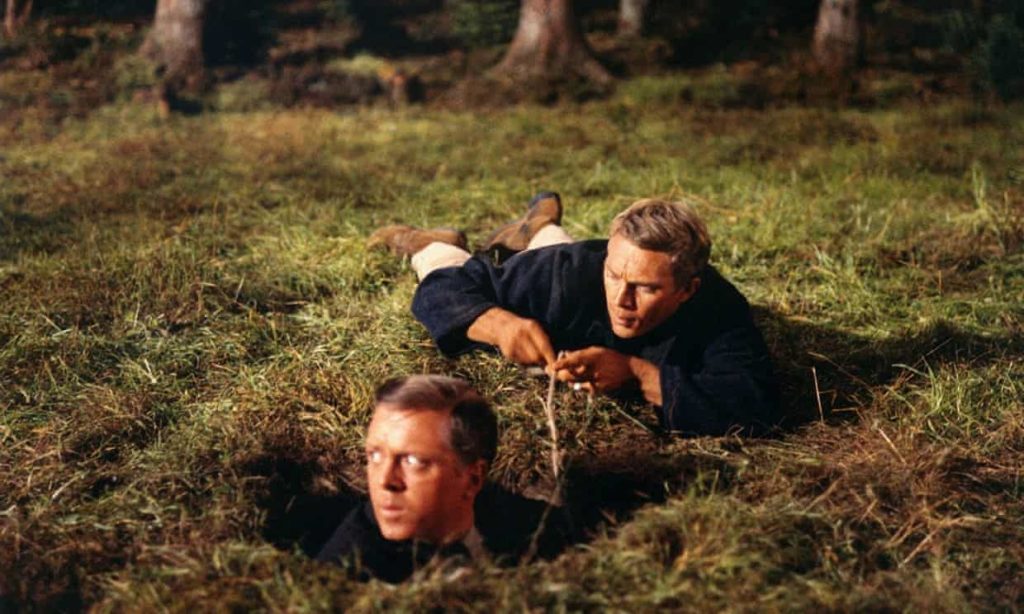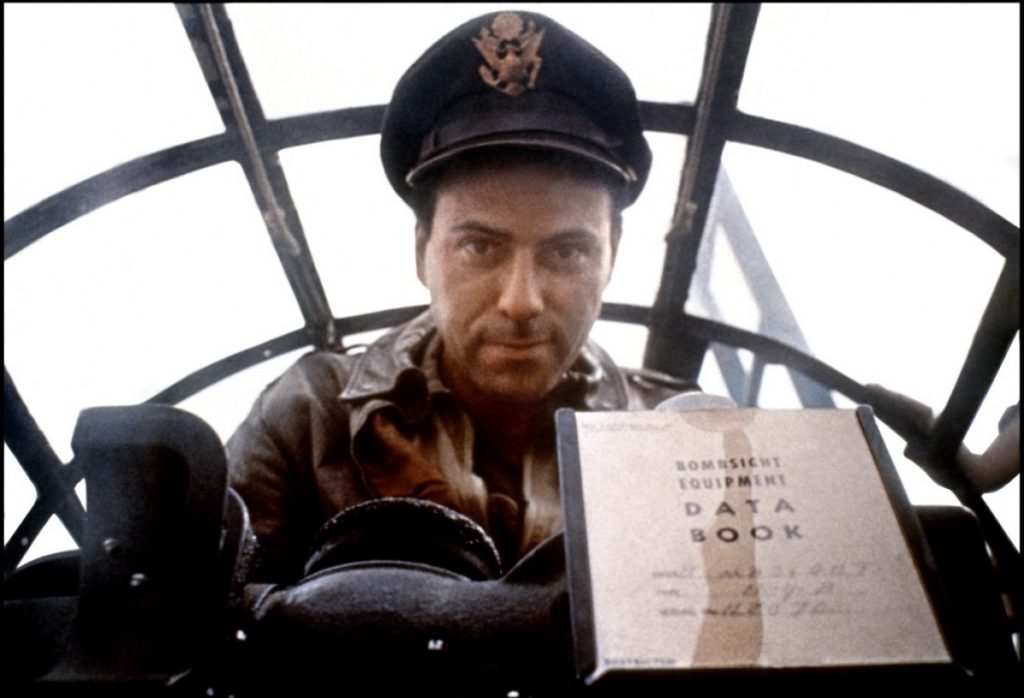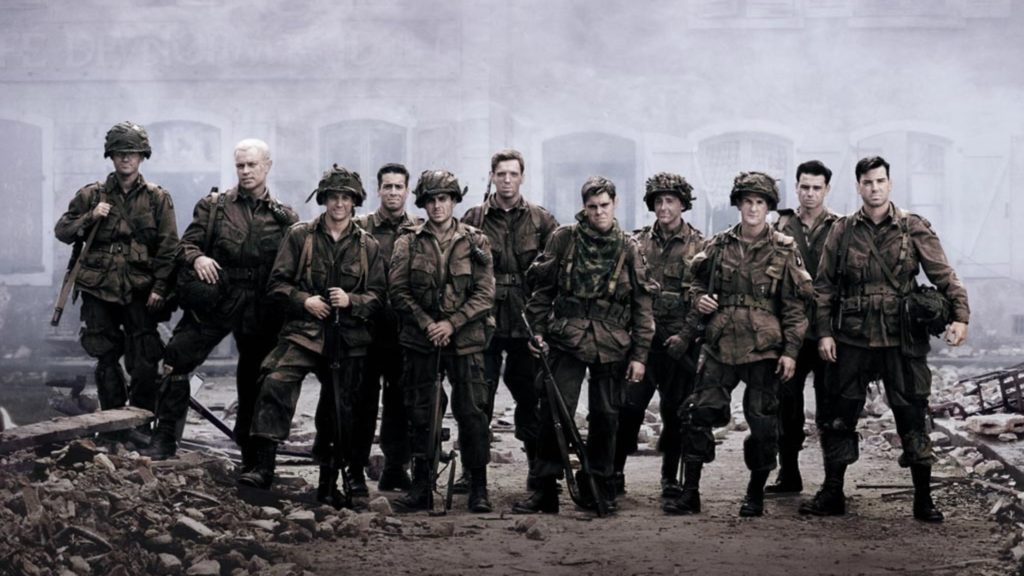Movies help us grasp what troops endured during WWII.
Growing up in the 1960s and ’70s, I was exposed to a variety of films centering on World War II.
My father served in Europe during the war as part of the U.S. Army Corps of Engineers. He didn’t talk about his experiences all that much, but I firmly believed our family and nation were on the right side of history.
I recall forming a negative impression of a nun in my elementary school once I learned that her family’s ethnic heritage was German. There was nothing rational about this reaction on my part. She remained the competent and caring teacher she had always been.
But my bias led me to conclude she was now one of “those people.” My dad helped defeat German tyranny, so there was no question in my mind over who were the good guys and bad guys in the war. Movies of that era reinforced this theme.

Films such as Sink the Bismarck! (1960), The Guns of Navarone (1961), Hell is for Heroes (1962), The Great Escape (1963), Battle of the Bulge (1965), Patton (1970) and A Bridge too Far (1977) featured daring men of action fighting the enemy. Grasping that death is imminent in war, these individuals faced doubts. But they overcame their fear and did what was needed to secure victory for the Allies.
There also were movies that used World War II as a backdrop for humor. Two of them came out in 1970: Catch-22 and Kelly’s Heroes.
Based on Joseph Heller’s 1961 novel of the same name, Catch-22 captures the absurdities of military bureaucracy during wartime. Capt. John Yossarian (Alan Arkin), a B-25 bombardier, wants to avoid the possibility of being killed by leaving his air crew. But this is a sensible response to impending death, which makes him fit for duty. Only those who want to carry out their missions can be classified as crazy and, thus, unfit to fly.
Loosely inspired by real events, Kelly’s Heroes follows a group of Army misfits as they go AWOL to steal gold being held in a French bank behind German lines. It stars Clint Eastwood, Don Rickles, Telly Savalas, Donald Sutherland, Carroll O’Connor and Gavin MacLeod.

The more popular films of that period centering on World War II did not delve too deeply into the emotional toll that armed conflict exacted on those who engaged in it.
One of George C. Scott’s most memorable movie scenes is where he, portraying Gen. George S. Patton, slaps a soldier who is crying in the presence of wounded troops. This part of the film about the legendary Army commander alluded to the soldier’s psychological condition, but he is quickly ushered out of sight as Patton calls him a coward.
The soldier is later seen back with his unit at an event where Patton delivers an uncharacteristic public apology. But while Patton is officially disciplined by the military, his behavior is eventually justified as having given the soldier the proper motivation. Gen. Omar Bradley, played by Karl Malden, tells Patton: “I think that soldier you slapped back there in Sicily did more to win the war than any other private in the Army.”
Movies began taking a more somber approach to the tragic consequences of combat in the late 1970s, but these primarily dealt with the Vietnam War. The most prominent of these is The Deer Hunter (1978), the story of three lifelong friends from a Pennsylvanian steel mill community who are left scarred by their experiences as POWs. Starring Robert De Niro, John Savage, Meryl Streep and Christopher Walken, the film won five Oscars during the 1979 Academy Awards ceremony including for Best Picture. Sadly, renowned character actor John Cazale (who was romantically involved with Streep at the time) died from lung cancer a few months before The Deer Hunter was released.

But some World War II movies examined the detrimental effects of combat long before this era. One of the best known of this genre is The Best Years of Our Lives (1946). The film starred Fredric March, Myrna Loy, Harold Russell, Teresa Wright and Dana Andrews. It portrays several veterans who have difficulty adjusting to civilian life following the end of the war. It won nine Oscars including Best Picture, Best Director (William Wyler), Best Actor (March) and Best Supporting Actor (Russell).
This trend continued with the 1998 release of Saving Private Ryan, starring Tom Hanks, Edward Burns, Matt Damon and Tom Sizemore. The story follows a team of soldiers tasked with finding Army Pfc. James Ryan, whose three brothers were killed in action, and returning him safely to his family.
The movie was lauded for its realistic depiction of the unfathomable violence endured by Allied troops as they landed on Omaha Beach in Normandy on D-Day. It also shows the fear these men confronted as they prepare for battle. Hanks’s character has difficulty keeping his hand from shaking while drinking water from his canteen. Another soldier becomes sick to his stomach while crossing the English Channel.
The battle scenes are rather graphic but not gratuitously so. D-Day veterans commended the film for presenting how well troops carried out their orders in the midst of the chaos of armed conflict.
The first several soldiers standing in the front of each landing craft are immediately shot as German gunners focus on the doors of each boat just prior to them opening. Troops jumping into the sea are helplessly dragged to their death because they can’t shed their equipment quickly enough. Some of them are killed as bullets pierce them even under water.
Bullets fly all around, making it a wonder anyone survived. Artillery shells fired at advancing Allied troops rip bodies apart. One soldier can be seen picking up his own arm after a blast severs it from his body. Dead troops are scattered all along the beach as blood stains the shoreline.
This was not the typical battle scene offered in World War II movies from previous decades. Saving Private Ryan gave viewers a much better sense of what it was like for troops to be landing at Normandy that day. The film won five Oscars in 1999 including Best Director for Steven Spielberg.

Hanks and Spielberg would partner again for two other World War II projects: Band of Brothers (2001) and The Pacific (2010), which both aired on HBO. These two series also presented realistic battle scenes and showed how the war altered the lives of those who fought in it.
When studying history, particularly the complexities of war, nothing can substitute for books written by those who know their material best. Some films, though, are a good complement to this work. They present a picture we can’t imagine unless we’ve been on the battlefield.
World War II ended 75 years ago. And as we commemorate Memorial Day this weekend, it’s appropriate that we take time to reflect on its frightful cost. Between 45 million and 60 million people (military and civilians) on both sides lost their lives — about 418,500 of them Americans.
When produced well, movies can help us understand what it was like for the individuals involved in World War II. These films give us a much greater appreciation for the troops who fought, especially those who died. During the closing scene of one episode of Band of Brothers, one of the characters narrates some key insights worth contemplating:
“I wondered if people back home would ever know what it cost the soldiers to win this war. In America, things were already beginning to look like peacetime. The standard of living was on the rise; racetracks and nightclubs were booming; you couldn’t get a hotel room in Miami Beach, it was so crowded. How could anyone ever know the price paid by soldiers in terror, agony and bloodshed if they’d never been to places like Normandy, Bastogne or Hageunau?”

